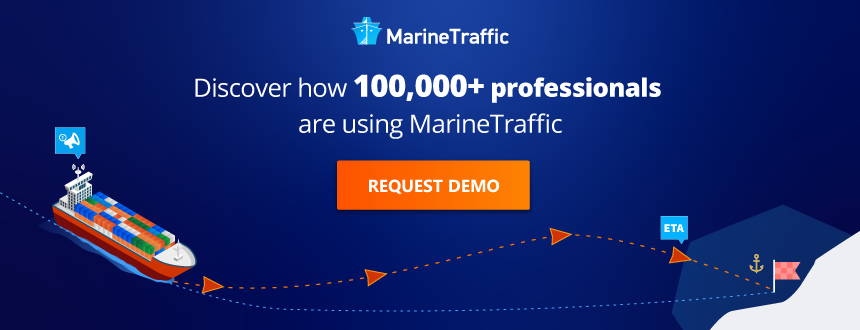Source from The Marine Traffic
India’s Sagarmala programme aims to improve its prosperity through more efficient maritime-related infrastructure
Media www.rajawalisiber.com – The project, known as Sagarmala, or ‘ocean necklace’ was announced in 2016 and aims to reduce logistics cost for both domestic and exported and imported cargoes, with an especial focus on the nation’s ports and 7,500 km coastline.
India is considered to have huge potential to be a great superpower, and according to Investopedia ranks sixth in the top 10 economies in the world by GDP.
A fast growing economy with a GDP growth rate of 8.7% in 2021, ports are vital to its continued growth. Its state-owned ports, however, whilst having seen an uplift in recent years, are slower than the global benchmark at turning around vessels at berth.
This comes at a time when a series of global events has put India centre stage for dry bulk trade flow developments. Fears of runaway inflation in India in May prompted an outright halt to the country’s wheat exports, a likely halt to outbound iron ore shipments and changed the economics of steel exports.
According to the Indian government, about 90% of India’s trade by volume is moved via the country’s maritime route. The Sargamala project will support continuous investment of this infrastructure and enable the government’s investment and manufacturing programme – Make in India.
India’s Economic Survey for 2021-22 reveals that the average turnaround time across the country’s 13 ports (only one of which is privately owned) is 2.25 days – a considerable improvement on recent years, but still slightly below UNCTAD’s global statistic of around one day.
The Indian government, has identified a total of 802 ports and hinterland connectivity projects as part of Sagarmala, of which 194 have been completed.
One project completed is a new berth for coastal shipping at the country’s biggest port, Jawaharlal Nehru Port Trust also known as Nhava Sheva.
Situated just south of Mumbai on the west coast, the port is primarily concerned with container traffic as illustrated by MarineTraffic data – vessel port calls show that it handled 177 containerships in April and 182 vessels in May. This compared with the amount of tankers for wet bulk handled, which stood at 44 and 50 respectively.

According to Port Technology International, JNPT Chairman Shri Sanjay Sethi said at the opening in July 2021, “The construction of the dedicated berth is in tune with the government’s policy to promote coastal shipping to shift freight from road to an environment-friendly and cost-effective mode of transport.”
He added that the berth will aid faster cargo coastal movement through a “green channel”.
“Apart from meeting the objectives of the Ministry, the coastal berth will help increasing coastal shipping share in the domestic cargo movement and help the EXIM [exports/ imports] community,” he said.
The same source looked at the port’s throughput between April and December 2021 and observed that container traffic throughput stood at 4,177,211 teu handled, an increase of more than 29% compared to the same period in 2020.
Port arrivals and departures
| JNPT | Paradip | ||||
| Arrivals | Departures | Arrivals | Departures | ||
| April 2022 | |||||
| Containerships | 177 | 177 | 5 | 5 | |
| Breakbulk | 9 | 9 | 3 | 3 | |
| Dry bulk | 6 | 6 | 142 | 141 | |
| LPG | 9 | 9 | 2 | 2 | |
| Wet Bulk | 44 | 45 | 42 | 44 | |
| May 2022 | |||||
| Containerships | 182 | 181 | 1 | 1 | |
| Breakbulk | 3 | 3 | 1 | 1 | |
| Dry bulk | 7 | 6 | 133 | 135 | |
| LPG | 9 | 8 | 4 | 4 | |
| Wet bulk | 50 | 52 | 47 | 46 | |
Port arrival and departures counts for commercial IMO having vessels above 4,999 gt. Source: MarineTraffic
Through the Sagarmala programme, six sites have been identified to be developed as megaports. These are Sirkazhi, Kanyakumari, Belikeri, Vadhavan, Saga Island and Paradip Outer Harbour.
Paradip on the northeast coast, is already an established bulk handling terminal. MarineTraffic data shows that it handled 133 dry bulk carriers last month, along with 47 wet bulk carriers. Last month a government statement announced that the site will be expanded to make it easier to “enhance the port’s ability to handle Capesize vessels,” and will contribute to the port’s capacity addition of 25 MMTPA. This will improve port efficiency, enable better cargo handling, generate increased trade and “also lead to socio-economic growth including employment generation,” said the statement.

Paradip is also earmarked for development as a Smart Industrial Port City, which will “use latest technologies for enhancing performance, reducing cost and minimising the consumption of nonrenewable energy-resource, and to ultimately stimulate growth”.
New ports planned as part of the programme, include a deep-draft port at Saga Island, in the Bay of Bengal. The new facility to be strategically situated at the mouth of the Hooghly River, will complement the established port of Kolkata around 100km in land.
Further, new facility will be developed at Vadhavan in the north west. According to Construction World the port will be built on a 20km2 piece of land near the town of Dhanu, and operated as a public-private partnership. Vadhaven’s naturally deep draft of 20m will enable it to accommodate large containerships and breakbulk liquids including LNG.
The multi billion dollar Sagarmala programme, which aims to bring prosperity to the country as a whole, will rely on government and international and private investment to realise its aims.


